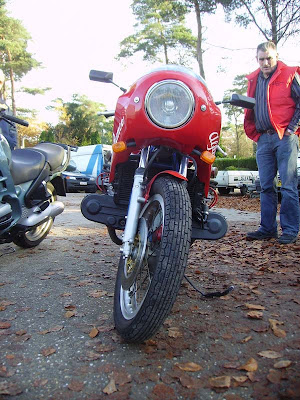
Editor’s note, this post is by guest writer Evan Vella, who actually speaks Japanese…lord wouldn’t that be a fantastic asset to any gadget blog. Lets hope we can get him to come on full time!
Batteries not included? BAH! It looks like Sony is aiming to harness the boundless energy of children by having them generate electricity through cranking, rolling, and twirling their gadgets. This new line of kinetic devices with interchangeable power sources is called ODO. The meaning behind the word “ODO” remains as opaque as the genesis of Japanese ball-kicking porn.
ODO, much like Voltron, is composed of five components with interesting Engrish names:
- A kinetic engine (“Push POWER Play”)
- A still camera (“Spin N’ Snap”)
- A solar array (“Juice Box”)
- A digital video camera (“Crank N’ Capture”)
- Stereo headphones (“Pull N’ Play”)
The “Spin N’ Snap” still camera doubles as its own crank; its mild mannered viewfinders are also finger-holds for cranking. The “Crank N’ Capture” digital video camera, true to its name, has a top-side crank, and resembles a sleek, miniaturized version of an early 20th century movie camera. The cameras derive supplemental energy through “Push POWER Play”, a boxy screen with a roller base. Kids roll “Push POWER Play” to generate additional electricity, and presumably attach it to the camera.
Because cranking and rolling may not be enough to power a digital camera, the children also have recourse to solar energy: “Juice Box,” a credit card-sized object, which morphs accordion-style into a solar panel array. The variety of power sources is ingenious, because, regardless of the situation, an alternative power source is available. When stuck on a packed commuter train with no space for cranking and rolling, a kid might still be able to capture some sun; while at night, cranking and rolling theoretically will suffice to power ODO devices.
The key components of the ODO line are the kinetic engine and the solar panel array. They can be used interchangeably to power ODO-brand cameras, headphones, and other devices Sony chooses to include in the brand if the prototype is successful. Sony hinted at plans to used simplified packaging and recycled plastic in the manufacturing of ODO products as part of their broader “Sustainable Product” initiative.
Via: Makoto Ichiro Tanaka, DigiCame Watch and Donald Melanson, Engadget
 Thanks to the rising sales of the new BMW X5 and Mini hatch, BMW Group managed to increase sales in May 2007 by 7.0 percent to 128.408 units. According to the world’s largest premium carmaker, BMW-brand sales rose 5.8 percent from a year earlier to 108,488 units, while Mini sales increased by 14.0 percent compared to May 2006, climbing up to 19,864 cars. As for Rolls Royce, the British brand sold 56 vehicles, exactly the same as last May. Comparatively, the Mercedes Group’s (Mercedes-Benz & Smart) sales rose by 2.9 percent in May 2007 to 116.000 cars (partially due to the introduction of the new C-Class and Fortwo) while Audi’s sales advanced 10.0 percent in May 07 to just over 87.000 units.
Thanks to the rising sales of the new BMW X5 and Mini hatch, BMW Group managed to increase sales in May 2007 by 7.0 percent to 128.408 units. According to the world’s largest premium carmaker, BMW-brand sales rose 5.8 percent from a year earlier to 108,488 units, while Mini sales increased by 14.0 percent compared to May 2006, climbing up to 19,864 cars. As for Rolls Royce, the British brand sold 56 vehicles, exactly the same as last May. Comparatively, the Mercedes Group’s (Mercedes-Benz & Smart) sales rose by 2.9 percent in May 2007 to 116.000 cars (partially due to the introduction of the new C-Class and Fortwo) while Audi’s sales advanced 10.0 percent in May 07 to just over 87.000 units. 










 No…I’m serious. Gasoline is now so coveted in America, that folks are swapping one life-giving, all-powerful fluid for another. Yep, if you donate blood to the American Red Cross in Pennsylvania or New Jersey this summer, you’ll get a chance to win $3,500 in gas!
No…I’m serious. Gasoline is now so coveted in America, that folks are swapping one life-giving, all-powerful fluid for another. Yep, if you donate blood to the American Red Cross in Pennsylvania or New Jersey this summer, you’ll get a chance to win $3,500 in gas!
 In any case, having attended the American Wind Energy Association’s annual
In any case, having attended the American Wind Energy Association’s annual

